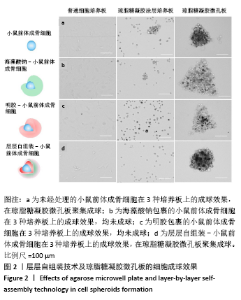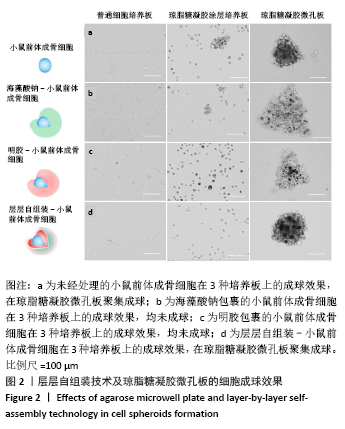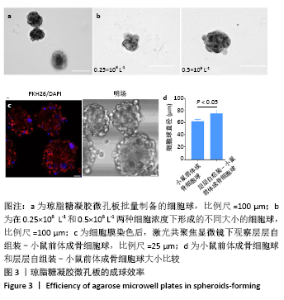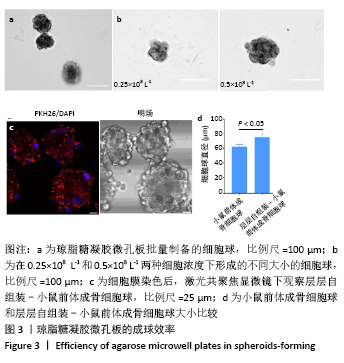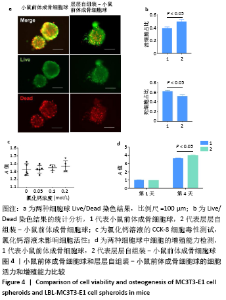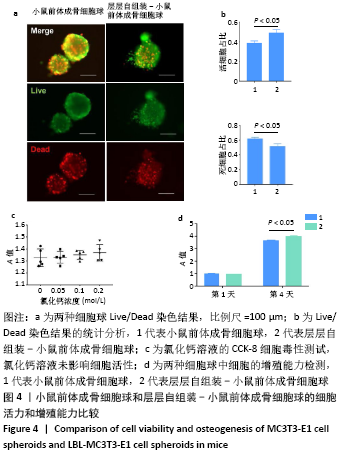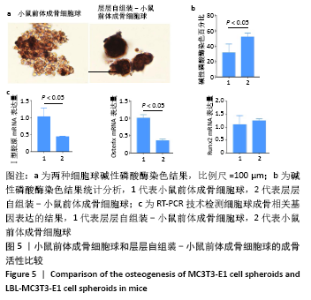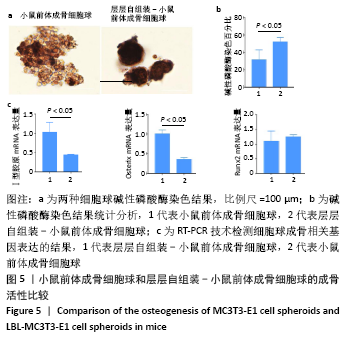[1] JIANG B, YAN L, MIAO Z, et al. Spheroidal formation preserves human stem cells for prolonged time under ambient conditions for facile storage and transportation. Biomaterials. 2017;133:275-286.
[2] HO SS, KEOWN AT, ADDISON B, et al. Cell Migration and Bone Formation from Mesenchymal Stem Cell Spheroids in Alginate Hydrogels Are Regulated by Adhesive Ligand Density. Biomacromolecules. 2017; 18(12):4331-4340.
[3] MORITANI Y, USUI M, SANO K, et al. Spheroid culture enhances osteogenic potential of periodontal ligament mesenchymal stem cells. J Periodontal Res. 2018;53(5):870-882.
[4] DAHLMANN J, KENSAH G, KEMPF H, et al. The use of agarose microwells for scalable embryoid body formation and cardiac differentiation of human and murine pluripotent stem cells. Biomaterials. 2013;34(10):2463-2471.
[5] FUKUDA Y, AKAGI T, ASAOKA T, et al. Layer-by-layer cell coating technique using extracellular matrix facilitates rapid fabrication and function of pancreatic beta-cell spheroids. Biomaterials. 2018;160: 82-91.
[6] FARUQU FN, LIAM-OR R, ZHOU S, et al. Defined serum-free three-dimensional culture of umbilical cord-derived mesenchymal stem cells yields exosomes that promote fibroblast proliferation and migration in vitro. FASEB J. 2021;35(1):e21206.
[7] TOPUZ F, NADERNEZHAD A, CALISKAN OS, et al. Nanosilicate embedded agarose hydrogels with improved bioactivity. Carbohydr Polym. 2018; 201:105-112.
[8] WANG Z, YANG K, LI H, et al. In situ observation of sol-gel transition of agarose aqueous solution by fluorescence measurement. Int J Biol Macromol. 2018;112:803-808.
[9] PETRENKO Y, SYKOVA E, KUBINOVA S. The therapeutic potential of three-dimensional multipotent mesenchymal stromal cell spheroids. Stem Cell Res Ther. 2017;8(1):94.
[10] CESARZ Z, TAMAMA K. Spheroid Culture of Mesenchymal Stem Cells. Stem Cells Int. 2016;2016:9176357.
[11] WHITEHEAD J, KOTHAMBAWALA A, LEACH JK. Morphogen Delivery by Osteoconductive Nanoparticles Instructs Stromal Cell Spheroid Phenotype. Adv Biosyst. 2019;3(12):1900141.
[12] ZHANG Y, GORDON A, QIAN W, et al. Engineering nanoscale stem cell niche: direct stem cell behavior at cell-matrix interface. Adv Healthc Mater. 2015;4(13):1900-1914.
[13] ELIZAROVA IS, LUCKHAM PF. Layer-by-layer adsorption: Factors affecting the choice of substrates and polymers. Adv Colloid Interface Sci. 2018;262:1-20.
[14] JANARDHANAM LSL, INDUKURI VV, VERMA P, et al. Functionalized layer-by-layer assembled film with directional 5-fluorouracil release to target colon cancer. Mater Sci Eng C Mater Biol Appl. 2020;115:111118.
[15] EMAMI Z, EHSANI M, ZANDI M, et al. Controlling alginate oxidation conditions for making alginate-gelatin hydrogels. Carbohydr Polym. 2018;198:509-517.
[16] MAJIDI SS, SLEMMING-ADAMSEN P, HANIF M, et al. Wet electrospun alginate/gelatin hydrogel nanofibers for 3D cell culture. Int J Biol Macromol. 2018;118(Pt B):1648-1654.
[17] ACHILLI TM, MEYER J, MORGAN JR. Advances in the formation, use and understanding of multi-cellular spheroids. Expert Opin Biol Ther. 2012;12(10):1347-1360.
[18] ZHOU Y, CHEN H, LI H, et al. 3D culture increases pluripotent gene expression in mesenchymal stem cells through relaxation of cytoskeleton tension. J Cell Mol Med. 2017;21(6):1073-1084.
[19] RYU NE, LEE SH, PARK H. Spheroid Culture System Methods and Applications for Mesenchymal Stem Cells. Cells. 2019;8(12):1900141.
[20] THOMSEN AR, ALDRIAN C, BRONSERT P, et al. A deep conical agarose microwell array for adhesion independent three-dimensional cell culture and dynamic volume measurement. Lab Chip. 2017;18(1):179-189.
[21] DALBY MJ, GADEGAARD N, OREFFO RO. Harnessing nanotopography and integrin-matrix interactions to influence stem cell fate. Nat Mater. 2014;13(6):558-569.
[22] GE L, LI Q, JIANG J, et al. Integration of nondegradable polystyrene and degradable gelatin in a core-sheath nanofibrous patch for pelvic reconstruction. Int J Nanomedicine. 2015;10:3193-3201.
[23] LI L, DU Y, XIONG Y, et al. Injectable negatively charged gelatin microsphere-based gels as hemostatic agents for intracavitary and deep wound bleeding in surgery. J Biomater Appl. 2018;33(5):647-661.
[24] RASTOGI P, KANDASUBRAMANIAN B. Review of alginate-based hydrogel bioprinting for application in tissue engineering. Biofabrication. 2019; 11(4):042001.
[25] DHAMECHA D, MOVSAS R, SANO U, et al. Applications of alginate microspheres in therapeutics delivery and cell culture: Past, present and future. Int J Pharm. 2019;569:118627.
[26] RU L, WU N, WEI K, et al. Improving cell survival and engraftment in vivo via layer-by-layer nanocoating of hESC-derived RPE cells. Stem Cell Res Ther. 2020;11(1):495.
[27] HUANG C, FANG G, ZHAO Y, et al. Bio-inspired nanocomposite by layer-by-layer coating of chitosan/hyaluronic acid multilayers on a hard nanocellulose-hydroxyapatite matrix. Carbohydr Polym. 2019; 222:115036.
[28] WONG CY, AL-SALAMI H, DASS CR. Microparticles, microcapsules and microspheres: A review of recent developments and prospects for oral delivery of insulin. Int J Pharm. 2018;537(1-2):223-244.
[29] LIN BJ, WANG J, MIAO Y, et al. Cytokine loaded layer-by-layer ultrathin matrices to deliver single dermal papilla cells for spot-by-spot hair follicle regeneration. J Mater Chem B. 2016;4(3):489-504.
[30] HEO DN, HOSPODIUK M, OZBOLAT IT. Synergistic interplay between human MSCs and HUVECs in 3D spheroids laden in collagen/fibrin hydrogels for bone tissue engineering. Acta Biomater. 2019;95: 348-356.
[31] CARVALHO MS, SILVA JC, CABRAL JMS, et al. Cultured cell-derived extracellular matrices to enhance the osteogenic differentiation and angiogenic properties of human mesenchymal stem/stromal cells. J Tissue Eng Regen Med. 2019;13(9):1544-1558.
|
